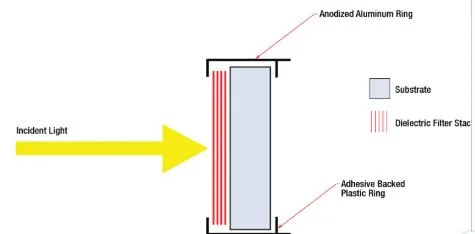What Is the Real Value of Gold and Silver? It Starts with Melt Value
When most people consider the value of gold or silver, they think about the flashy market price numbers shown on television. But what people often don’t realize is that the true base value of a precious metal item (like jewelry) is its melt value, which is essential for sellers, buyers, investors, and collectors.
If you’re about to sell some old jewelry, purchase bullion, or determine the worth of some inherited coins, knowing the melt value of the precious metal item will help ensure an equitable transaction. Also, resources like a gold calculator can provide up-to-date and accurate pricing.
What Exactly Is Melt Value?
Melt value is simply the quantity your item will sell for based upon the current market value of its metal content (and nothing more).
Let’s keep it simple:
- Let’s say you have a 14K gold chain. Since 14k is 58.5% pure (the rest of the weight is alloy), you can only calculate the value of the gold content:
- Weigh the chain (in grams).
- Multiply by 0.585 (to determine the pure gold content).
- Multiply by the current gold price/gram.
That final number is your melt value – the value that a refiner or a dealer would be willing to pay to melt it down to recover the raw gold.
How Are Precious Metal Prices Set?
To get the melt value, you need to know the live price of gold, silver, or platinum. These prices are determined globally, mainly through:
- COMEX (New York-based Commodity Exchange)
- NYMEX (New York Mercantile Exchange)
- LME (London Metal Exchange)
The spot price is what matters most; it’s the real-time market price for buying/selling metal for immediate delivery. This is what melt value calculators use.
And since prices change constantly due to supply and demand, inflation, global markets, and geopolitical issues, checking the current gold price is essential before making a move.
Market Value vs. Melt Value: Know the Difference
It’s easy to confuse the market value of your gold ring or silver coin with its melt value. But here’s the difference:
- Melt Value: The raw worth of the metal based on weight and purity.
- Market Value: Includes extra pricing due to craftsmanship, brand, age, or rarity.
- Collectible Value: Often much higher than melt value for rare coins or historic pieces.
So, while your great-grandmother’s ring may be worth more than its melt value due to sentiment or design, the melt value gives you a solid starting point in any negotiation.
Who Should Care About Melt Value?
If you deal with precious metals in any form, melt value is your starting point. Here’s who benefits most:
- Jewelers & Appraisers: Need tools like a scrap gold calculator to assess value.
- Investors & Bullion Buyers: Want to track gram of gold price and purity to maximize ROI.
- Scrap Sellers: Use scrap metal pricing tools to ensure they’re paid fairly.
- Coin Dealers & Collectors: Assess melt value to determine base prices.
- Consumers: Anyone searching “sell gold jewelry near me” should know their metal’s real worth first.
How a Gold Calculator Makes It Easy
Instead of doing all the math manually, you can use the gold calculator at MeltCalculator.com. It’s fast, simple, and accurate:
- Enter the weight of your item (in grams, ounces, or dwt).
- Choose the purity (10k, 14k, 18k, 24k, or enter a custom percentage).
- The calculator displays the live melt value based on up-to-date market prices.
You can even use it as a grade calculator with weights to compare different metal purities side by side. Whether you’re trying to calculate silver value or check the 14k gold price per gram, it does the heavy lifting for you.
Why Real-Time Melt Pricing Matters
Imagine this: A local buyer offers you $300 for a gold chain. But you use the gold calculator and discover the melt value is $460. That’s a big gap, and that knowledge empowers you to negotiate better or walk away.
With price fluctuations happening by the hour, using a melt value calculator isn’t just helpful, it’s essential for:
- Avoiding underpayments
- Knowing how much your gold is worth per gram
- Making informed buy/sell decisions
- Maximizing returns on scrap or investment metals
Don’t Guess: Know Your Melt Price
From a 10k gold necklace to a pure silver coin, the melt value is the foundation of any trustworthy transaction involving precious metals. It strips away the hype and gives you the raw truth, how much your item is worth today.
When most people consider the value of gold or silver, they think about the flashy market price numbers shown on television. But what people often don’t realize is that the true base value of a precious metal item (like jewelry) is its melt value, which is essential for sellers, buyers, investors, and collectors.
If you’re about to sell some old jewelry, purchase bullion, or determine the worth of some inherited coins, knowing the melt value of the precious metal item will help ensure an equitable transaction. Also, resources like a gold calculator can provide up-to-date and accurate pricing.
What Exactly Is Melt Value?
Melt value is simply the quantity your item will sell for based upon the current market value of its metal content (and nothing more).
Let’s keep it simple:
- Let’s say you have a 14K gold chain. Since 14k is 58.5% pure (the rest of the weight is alloy), you can only calculate the value of the gold content:
- Weigh the chain (in grams).
- Multiply by 0.585 (to determine the pure gold content).
- Multiply by the current gold price/gram.
That final number is your melt value – the value that a refiner or a dealer would be willing to pay to melt it down to recover the raw gold.
How Are Precious Metal Prices Set?
To get the melt value, you need to know the live price of gold, silver, or platinum. These prices are determined globally, mainly through:
- COMEX (New York-based Commodity Exchange)
- NYMEX (New York Mercantile Exchange)
- LME (London Metal Exchange)
The spot price is what matters most; it’s the real-time market price for buying/selling metal for immediate delivery. This is what melt value calculators use.
And since prices change constantly due to supply and demand, inflation, global markets, and geopolitical issues, checking the current gold price is essential before making a move.
Market Value vs. Melt Value: Know the Difference
It’s easy to confuse the market value of your gold ring or silver coin with its melt value. But here’s the difference:
- Melt Value: The raw worth of the metal based on weight and purity.
- Market Value: Includes extra pricing due to craftsmanship, brand, age, or rarity.
- Collectible Value: Often much higher than melt value for rare coins or historic pieces.
So, while your great-grandmother’s ring may be worth more than its melt value due to sentiment or design, the melt value gives you a solid starting point in any negotiation.
Who Should Care About Melt Value?
If you deal with precious metals in any form, melt value is your starting point. Here’s who benefits most:
- Jewelers & Appraisers: Need tools like a scrap gold calculator to assess value.
- Investors & Bullion Buyers: Want to track gram of gold price and purity to maximize ROI.
- Scrap Sellers: Use scrap metal pricing tools to ensure they’re paid fairly.
- Coin Dealers & Collectors: Assess melt value to determine base prices.
- Consumers: Anyone searching “sell gold jewelry near me” should know their metal’s real worth first.
How a Gold Calculator Makes It Easy
Instead of doing all the math manually, you can use the gold calculator at MeltCalculator.com. It’s fast, simple, and accurate:
- Enter the weight of your item (in grams, ounces, or dwt).
- Choose the purity (10k, 14k, 18k, 24k, or enter a custom percentage).
- The calculator displays the live melt value based on up-to-date market prices.
You can even use it as a grade calculator with weights to compare different metal purities side by side. Whether you’re trying to calculate silver value or check the 14k gold price per gram, it does the heavy lifting for you.
Why Real-Time Melt Pricing Matters
Imagine this: A local buyer offers you $300 for a gold chain. But you use the gold calculator and discover the melt value is $460. That’s a big gap, and that knowledge empowers you to negotiate better or walk away.
With price fluctuations happening by the hour, using a melt value calculator isn’t just helpful, it’s essential for:
- Avoiding underpayments
- Knowing how much your gold is worth per gram
- Making informed buy/sell decisions
- Maximizing returns on scrap or investment metals
Don’t Guess: Know Your Melt Price
From a 10k gold necklace to a pure silver coin, the melt value is the foundation of any trustworthy transaction involving precious metals. It strips away the hype and gives you the raw truth, how much your item is worth today.



